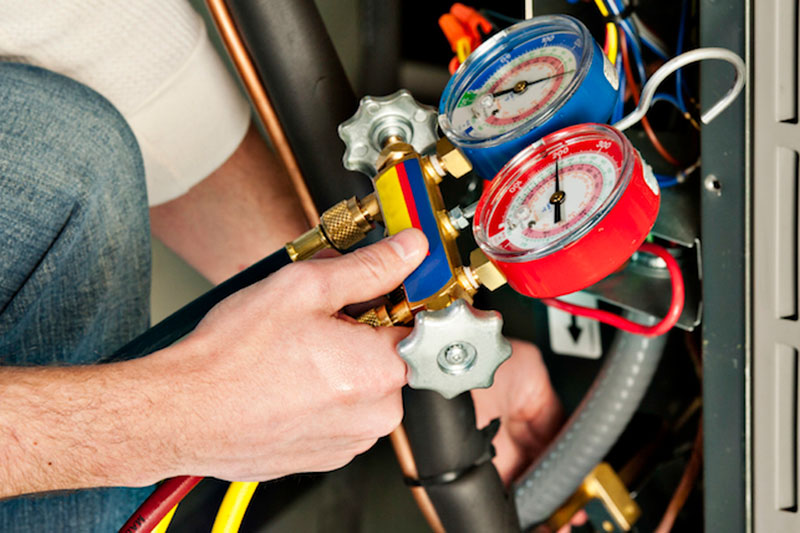
You might not think a lot about how your air conditioner functions, but it needs refrigerant to keep your residence fresh. This refrigerant is controlled by environmental regulation, because of the chemicals it contains.
Depending on when your air conditioner was added to your home, it may use R-22, R-410A or R-32 refrigerant. We’ll discuss the differences and which air conditioner refrigerants are being phased out in Lake Worth, as well as how these phaseouts affect you.
What’s R-22 and Why Is It Discontinued?
If your air conditioner was added before 2010, it probably has Freon®. You can discover if your air conditioner uses it by reaching us at 561-533-6066. You can also examine the name plate on your air conditioner condenser, which is situated outside your residence. This sticker will have details on what type of refrigerant your AC needs.
Freon, which is also known as R-22, has chlorine. Scientists consider R-22 to be damaging to the earth’s ozone layer and one that results in global warming. The Environmental Protection Agency, which controls refrigerants in the United States, outlawed its production and import in January 2020.
I Have a R-22 Air Conditioner. Should I Replace It?
It depends. If your air conditioning is running as designed, you can continue to keep it. With regular air conditioner maintenance, you can expect your air conditioning to run around 15–20 years. However, the Department of Energy says that replacing a 10-year-old air conditioner could save you 20–40% on annual cooling bills!
If you don’t replace your air conditioner, it may lead to an issue if you need air conditioning repair later on, specifically for refrigerant. Repairs may be higher-priced, since only small amounts of recycled and reclaimed R-22 is on hand.
With the end of R-22, a lot of new air conditioners now have Puron®. Also referred to as R-410A, this refrigerant was made to keep the ozone layer healthy. As it requires a varying pressure level, it doesn’t work with air conditioners that need R-22 for cooling.
However, Puron still has the possibility to create global warming. Because of that, it could also ultimately be discontinued. Although it hasn’t been communicated yet for residential air conditioners, it’s expected sometime this decade.
What Refrigerant Will Take the Place of R-410A?
In preparation of the discontinuation, some brands have initiated using R-32 in new air conditioners. This refrigerant ranks low for global warming potential—approximately one-third less than R-410A. And it also decreases energy expenditure by about 10%, according to the Intergovernmental Panel on Climate Change’s Fourth Assessment Report. That’s savings that might be sent on to you through your cooling bills.
Smyth Air Conditioning Can Assist with All Your Air Conditioning Needs
In brief, the changes to air conditioner refrigerant probably won’t impact you greatly until you require repairs. But as we went over earlier, refrigerant repairs might be more expensive because of the low amounts available.
In addition to that, your air conditioner typically malfunctions at the worst time, often on the warmest day when we’re getting a lot of other calls for AC repair.
If your air conditioner requires a phased out refrigerant or is aging, we advise installing a new, energy-efficient air conditioner. This ensures a stress-free summer and could even reduce your cooling expenses, especially if you get an ENERGY STAR®-rated model. Plus, Smyth Air Conditioning has many financing solutions to make your new air conditioner even more affordable. Contact us at 561-533-6066 to get started now with a free estimate.
